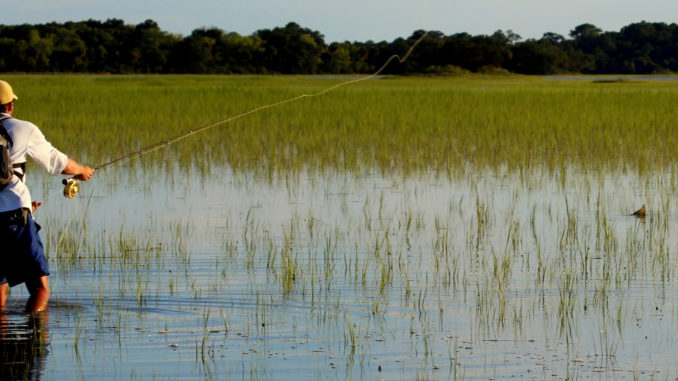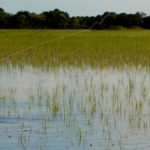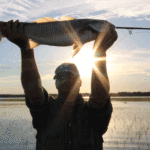
Sure, it’s cooling off, but food triggers the bite
September is not often described as a great fishing month, a designation usually reserved for the cooler months of October and November when fish really start putting the feed on before the serious cold weather arrives.
But September offers great variety, a break from the brutal heat and fishing that is just super for those who take advantage of the recent influx of bait. Things are just on the move.
“September is the month of transition,” said Capt. Fred Rourk of Sweet Tea Charters in Georgetown,
Even the slight cooling of the water in September is enough to trigger a positive response from fish. At the same time, big shrimp move inshore, and nothing that swims will turn its nose up at a shrimp.
“The shrimp are larger, and the reds’ diets will switch to them on the low tide,” said Rourk. “Look for dipping gulls along the bank.”
Anglers looking for something bigger can also find satisfaction this month. As the fall mullet run begins along the beachfronts, hungry tarpon are sure to follow, offering one last chance for anglers to fight the silver king in South Carolina waters. Later in the month, when the water temperature finally edges into the 70s, Rourk said, “Kings should be close again, taking advantage of the ample groceries along the coast.”
Many saltwater anglers who chase trout are eagerly anticipating the cooling temperatures and arrival of big concentrations of bait. This year has produced the best and biggest trout catches since the cold kills a few winters ago, and once the bait starts running, the feed is really on. Good places to target are the mouths of creeks and ditches and any current breaks that form along the edges of oyster beds or banks.
Live shrimp dead-drifted in the zone are often enough to produce strikes from trout, but if there are smaller fish around, it doesn’t take long to go through several dozen live shrimp with only a keeper or two. Artificials, including DOA and Gulp!, last much longer and can be just as productive as live bait if fished correctly. The trick is to get the baits into the zone and work the popping cork to call the trout in. Some days it will take only a few jerks on the cork to produce strikes; other days, a more aggressive action is required. Varying the action until the correct presentation is discovered is a great way to get the most out of a day using artificials.
“The higher tide will produce trout on live shrimp or DOAs under popping corks,” Rourk said.
For a more relaxing day on the water, or for fishing with young children with short attention spans, nothing quite beats dropping an anchor and fishing on the bottom. Again, it is all about the abundant bait. Cut shrimp or mullet on top-and-bottom rigs will tempt all kinds of good things in our rivers and sounds. Whiting is perhaps the most common and easiest to catch, with other bottom-hugging fish like croakers and sea bass not far behind, with tackle-testing sharks lurking in the depths. The best bottom-fishing is usually found where there is some sort of structure on the bottom, including rocks, shell rakes or steep dropoffs, which are easily spotted with a standard fishfinder.
This September, anglers who live for sight-casting to tailing reds will get plenty of opportunities, with more days featuring tailing tides than not. Basically, any time the tide gets high enough to cover the firm flats, reds will be on them looking for an easy meal.
Around Georgetown, Rourk likes mid-day tailing tides in September. “It is tailing redfish time around the equinox; Sept. 16 to Sept. 21 offers tailing tides in the middle of the day making for high-sun sight- casting.”
With reds feeding more aggressively, it is more important to get a something in front of them in the grass than what that something in. Weedless lures, including a Red Ripper spoon, flies with weedguards or baits rigged weedless will produce hard-hitting strikes from tailing reds when dropped in their line of sight.
Of course, there are even more opportunities available in September than just the few listed here, but the point is, with bait moving in and temperatures starting to cool, the fishing turns on. No matter what the species, September is great time to get after them.





Be the first to comment